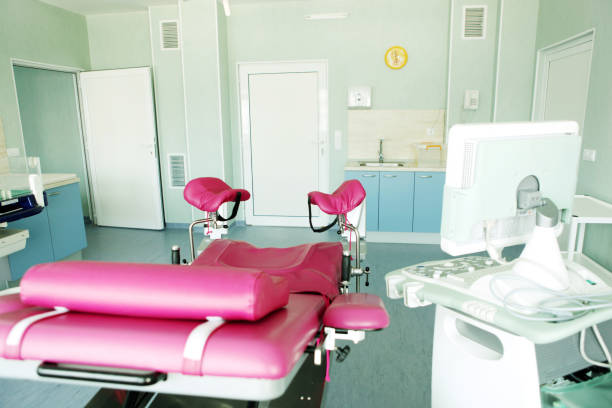What you need to know about cervical cancer screening
A Pap smear can alert your doctor to the presence of suspicious cells that need further testing.

Picture: iStock

Picture: iStock
Subscribe to continue reading this article
and support trusted South African journalism
 SUBSCRIBE
SUBSCRIBE
Let us first define what cancer of the cervix is. The cervix is the lower part of the uterus that opens into the vagina. Cervical cancer occurs when abnormal cells on the cervix grow out of control.
It can often be successfully treated when it’s found early. It is usually found at a very early stage through a Pap smear test.
Cervical cancer is caused by the human papillomavirus (HPV). You can get HPV by having sexual contact with someone who has it. Most adults have been infected with HPV at some time.
An infection may go away on its own. But sometimes it can cause genital warts or lead to cervical cancer. That’s why it’s important for women to have regular Pap tests.
• Having an ongoing infection with a high-risk type of human papillomavirus .
• High-risk sexual behaviours. These include having more than one sex partner or having a sex partner who has more than one partner. Safer sex can reduce your risk.
• Having an impaired immune system. Some conditions, such as HIV, can make you more likely to get an HPV infection.
• Smoking cigarettes.
A Pap smear, also called a Pap test, is a procedure to test for cervical cancer in women. A Pap smear involves collecting cells from your cervix, the lower, narrow end of your uterus that’s at the top of your vagina.
A Pap smear can also detect changes in your cervical cells that suggest cancer may develop in the future. Detecting these abnormal cells early with a Pap smear is your first step in stopping the possible development of cervical cancer.

Picture: iStock
The test is performed in your doctor’s office and takes only a few minutes.
You will be asked to lie down on your back on an exam table with your knees bent. Your heels rest in supports called stirrups.
Your doctor will gently insert an instrument called a speculum into your vagina. The speculum holds the walls of your vagina apart so that your doctor can easily see your cervix. Inserting the speculum may cause a sensation of pressure in your pelvic area.
Then your doctor will take samples of your cervical cells using a soft brush or a flat scraping device called a spatula. It is not a painful procedure, but may be slightly uncomfortable.
After the test is done you can go about your day without restrictions.
Depending on the type of Pap testing you’re undergoing, your doctor transfers the cell sample collected from your cervix into a container holding a special liquid to preserve the sample (liquid-based Pap test) or on to a glass slide (conventional Pap smear).
The samples are then taken to a laboratory where they’re examined under a microscope to look for characteristics in the cells that indicate cancer or a precancerous condition.

Picture: iStock
In general it is usually recommended that one begins Pap testing at age 21 or any time after starting to have sexual intercourse. Doctors generally recommend repeating Pap testing every two years for women ages 21-65.
If you have any of the aforementioned risk factors, your doctor may recommend more frequent Pap smears, regardless of your age.
You and your doctor can discuss the benefits and risks of Pap smears and decide what’s best for you, based on your risk factors.
Doctors generally agree – make sure yours does, too – that women can consider stopping routine Pap testing at age 65 if their previous tests for cervical cancer have been negative.
If you’re sexually active with multiple partners, your doctor may recommend continuing testing.
A Pap smear is a safe way to screen for cervical cancer. However, it is not foolproof.
It is possible to receive false-negative results – the test indicates no abnormality, even though you do have abnormal cells.
A false-negative result does not mean a mistake was made.
Factors that can cause a false-negative result include:
Although it’s possible for abnormal cells to go undetected, time is on your side.
Cervical cancer takes several years to develop. And if one test doesn’t detect the abnormal cells, the next test most likely will.

Picture: iStock
• Avoid intercourse, douching, or using any vaginal medicines or spermicidal foams, creams or jellies for two days before, as these may wash away or obscure abnormal cells;
• Try not to schedule a Pap smear during your menstrual period. Although the test can be done, it’s best to avoid this time of your cycle, if possible.
A Pap smear can alert your doctor to the presence of suspicious cells that need further testing.
If only normal cervical cells were discovered during your Pap smear, you are said to have a negative result. You will not need any further treatment or testing until you are due for your next Pap smear and pelvic exam.
If abnormal or unusual cells are discovered, you are said to have a positive result. A positive result does not mean you have cervical cancer. It depends on the type of cells discovered in your test.
If your Pap smear is abnormal, your doctor may perform a procedure called colposcopy using a special magnifying instrument (colposcope) to examine the tissues of the cervix, vagina and vulva.
Your doctor also may take a tissue sample (biopsy) from any areas that appear abnormal. The tissue sample is sent to a laboratory for analysis and a definitive diagnosis.
For more news your way, download The Citizen’s app for iOS and Android.
Access to the top content, vouchers and other member only benefits